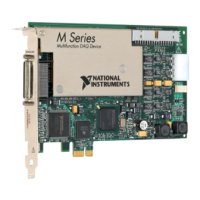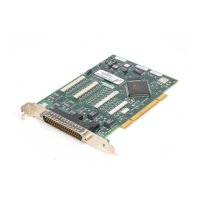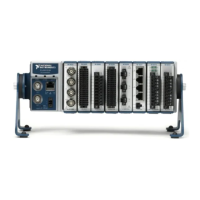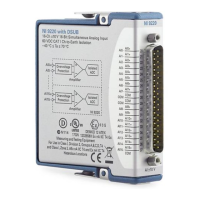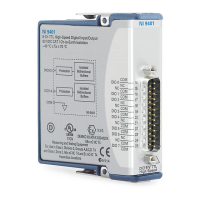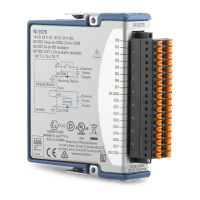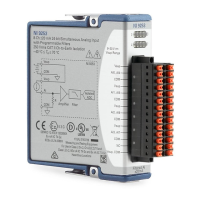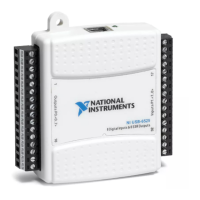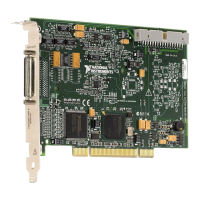Chapter 2 Theory of Operation
PCI E Series RLPM 2-10
©
National Instruments Corporation
The dither circuitry adds approximately 0.5 LSB rms of white Gaussian
noise to the signal being converted by the ADC. This addition is useful
for applications, such as calibration, involving averaging to increase the
resolution of the board to more than the resolution of the ADC. In such
applications, which are often lower frequency in nature, adding the dither
decreases noise modulation and improves differential linearity. Dither
should be disabled for high-speed applications not involving averaging
because it would only add noise. When taking DC measurements, such as
when calibrating the board, you should enable dither and average about
1,000 points to take a single reading. This process removes the effects of
quantization, reduces measurement noise, and improves resolution. Notice
that dither cannot be disabled on the PCI-MIO-16XE-50,
PCI-MIO-16XE-10, PCI-6031E, PCI-6032E, PCI-6052E, or PCI-6033E.
The last channel bit is used to indicate that this is the last conversion in a
scan. The DAQ-STC will end the scan on the conversion with this bit set.
The PCI E Series boards use sampling, successive approximation ADCs
with 12 or 16 bits of resolution with maximum conversion rates between
50 µs and 800 ns. The converter can resolve its input range into 4,096
different steps for the 12-bit ADC and 65,536 for the 16-bit ADC. The input
range of the 12-bit boards is ±5 V in bipolar mode and 0 to +10 V in
unipolar mode. These modes correspond to ranges of –2,048 to 2,047 in
unipolar mode and 0 to 4,095 in bipolar mode. The input range of the 16-bit
boards is ±10 V in bipolar mode and 0 to +10 V in unipolar mode. These
modes correspond to ranges of –32,768 to 32,767 in bipolar mode and 0 to
65,535 in unipolar mode.
The PCI E Series boards include a 16-bit wide FIFO to buffer the analog
input data. This buffering will increase the maximum rate that the analog
input can sustain during continuous acquisition. The FIFO is 2,048 words
deep on the PCI-MIO-16XE-50, and 512 words deep on the other
PCI E Series boards. The DAQ-STC shifts the data into the FIFO from the
ADC when the conversion is complete. This buffering allows the ADC to
begin a new conversion even though the data has not yet been read from the
50 ✓ — ✓ —
100 ✓ ✓ ✓ ✓
Table 2-1. PGIA Gain Set Verses Board (Continued)
Gain
PCI-MIO-16E-1
PCI-MIO-16E-4
PCI-6071E
PCI-6052E
PCI-MIO-16XE-50
PCI-MIO-16XE-50
PCI-6031E
PCI-6032E
PCI-6033E
PCI-6023E
PCI-6024E
PCI-6025E
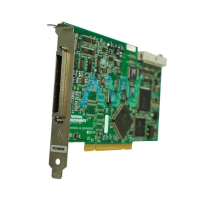
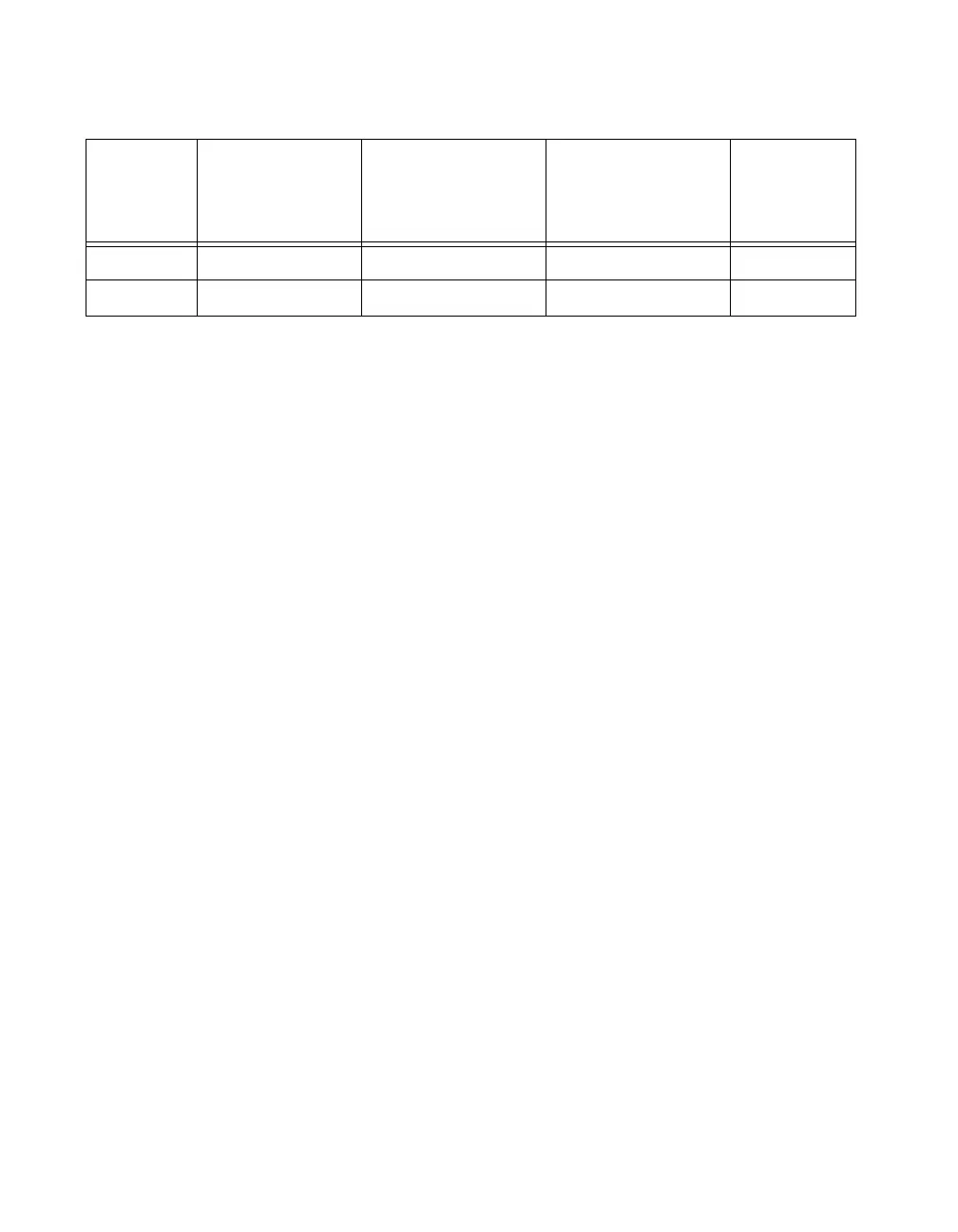